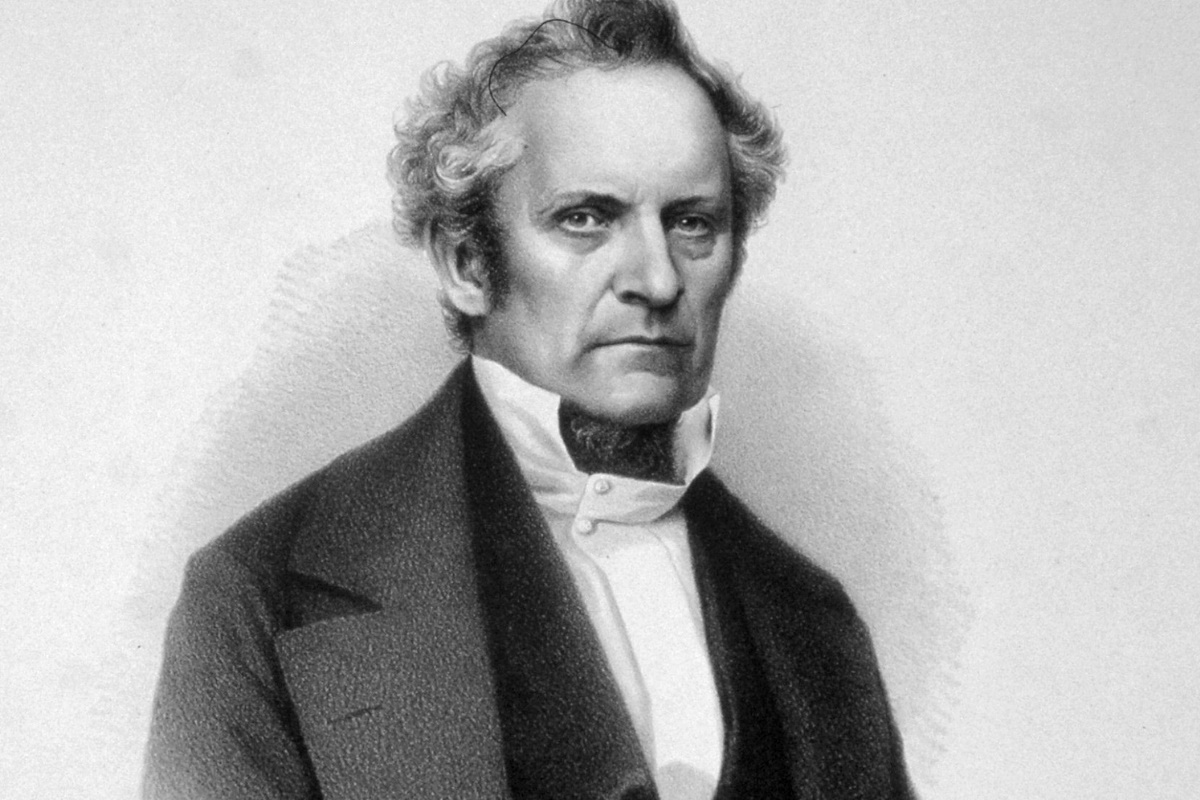
Julius Plücker, a renowned mathematician and physicist from the 19th century, remains an enigmatic figure whose contributions to science are often overshadowed. His groundbreaking research and discoveries have left a lasting impact on various fields, yet his name may not be as familiar as other scientific luminaries of his time.
In this article, we delve into the life and work of Julius Plücker, unraveling some fascinating facts that highlight his genius and significance in the world of science. From his groundbreaking investigation in the realm of mathematics to his pioneering experiments in electromagnetism, Plücker’s contributions have laid the foundation for numerous scientific advancements that we benefit from today.
Join us as we explore the enigmatic life of Julius Plücker and uncover some lesser-known aspects that shed light on the remarkable mind behind these breakthroughs.
Key Takeaways:
- Julius Plücker was a math and physics superstar! He invented cool math tools, discovered cathode rays, and connected geometry with the real world.
- Plücker’s work in math and physics still inspires scientists today. His ideas shaped our understanding of the world and led to many important discoveries.
Pioneering Differential Geometry
One of the notable achievements of Julius Plücker was his groundbreaking work in the field of differential geometry, which deals with the study of curves and surfaces using mathematical analysis.
Inventor of Plücker Coordinates
Plücker introduced a powerful mathematical tool known as Plücker coordinates, which revolutionized the study of geometry by providing an elegant way to represent lines and planes in space.
Pioneer of Algebraic Geometry
Julius Plücker made significant contributions to algebraic geometry, a branch of mathematics that focuses on the study of geometric objects defined by polynomial equations.
Investigating Complex Numbers
Plücker delved into the study of complex numbers, exploring their properties and applications in the realm of mathematics and physics.
Contributions to Electromagnetism
Julius Plücker’s investigations also extended to the field of electromagnetism, where he conducted experiments to understand the interaction between electricity and magnetism.
Discovering Cathode Rays
Plücker’s experiments with electric discharges in evacuated tubes led to his discovery of cathode rays, which played a pivotal role in the development of modern physics.
Studying Optical Phenomena
Julius Plücker dedicated considerable effort to the study of optical phenomena, delving into the behavior of light and its interaction with various materials.
Naming the Plücker Conoid
The Plücker conoid, a three-dimensional surface with interesting geometric properties, was named after Julius Plücker due to his significant contributions to the field of geometry.
Bridge between Geometry and Physics
Plücker played a crucial role in bridging the gap between the fields of geometry and physics, bringing mathematical concepts and principles into the realm of physical phenomena.
Collaborations with Johann Georg Neumann
Throughout his career, Julius Plücker collaborated closely with the mathematician Johann Georg Neumann, and together, they made several groundbreaking discoveries.
Legacy and Influence
Julius Plücker’s work continues to inspire and influence mathematicians and physicists to this day, as his innovative ideas laid the foundation for numerous advancements in these fields.
Conclusion
In conclusion, Julius Plücker was an enigmatic figure in the field of mathematics and physics. His contributions to the study of geometry, electromagnetism, and the nature of light were groundbreaking and continue to influence researchers and scientists to this day. Plücker’s determination and passion for knowledge led to important discoveries and advancements in various fields.
From his work on the Plücker coordinates to his experiments with cathode rays, Plücker’s contributions have left an indelible mark on the scientific community. His legacy serves as a reminder of the power of curiosity and innovation in driving progress.
While much is known about Julius Plücker’s professional achievements, his personal life remains shrouded in mystery. Nonetheless, the impact of his contributions in mathematics and physics cannot be overstated. Julius Plücker’s enigmatic nature only adds to the allure and fascination surrounding his unique story.
FAQs
Q: Who was Julius Plücker?
A: Julius Plücker was a German mathematician and physicist who made significant contributions to the fields of geometry and electromagnetism.
Q: What were Plücker coordinates?
A: Plücker coordinates are a set of numbers used to represent lines and points in space, allowing for a more efficient way to study and analyze geometric shapes.
Q: What were Julius Plücker’s contributions to physics?
A: Plücker conducted experiments with cathode rays and made important discoveries about their properties, laying the foundation for the development of modern electronics.
Q: Why is Julius Plücker considered enigmatic?
A: Very little is known about Plücker’s personal life and he seemed to prefer anonymity, focusing primarily on his work and research.
Q: How did Plücker’s work influence modern science?
A: Plücker’s discoveries and theories in various scientific fields, including electromagnetism and geometry, laid the groundwork for many subsequent breakthroughs and advancements.
Q: Where can I learn more about Julius Plücker?
A: There are several books and academic papers available that delve into the life and work of Julius Plücker, providing a deeper understanding of his contributions to mathematics and physics.
Was this page helpful?
Our commitment to delivering trustworthy and engaging content is at the heart of what we do. Each fact on our site is contributed by real users like you, bringing a wealth of diverse insights and information. To ensure the highest standards of accuracy and reliability, our dedicated editors meticulously review each submission. This process guarantees that the facts we share are not only fascinating but also credible. Trust in our commitment to quality and authenticity as you explore and learn with us.
